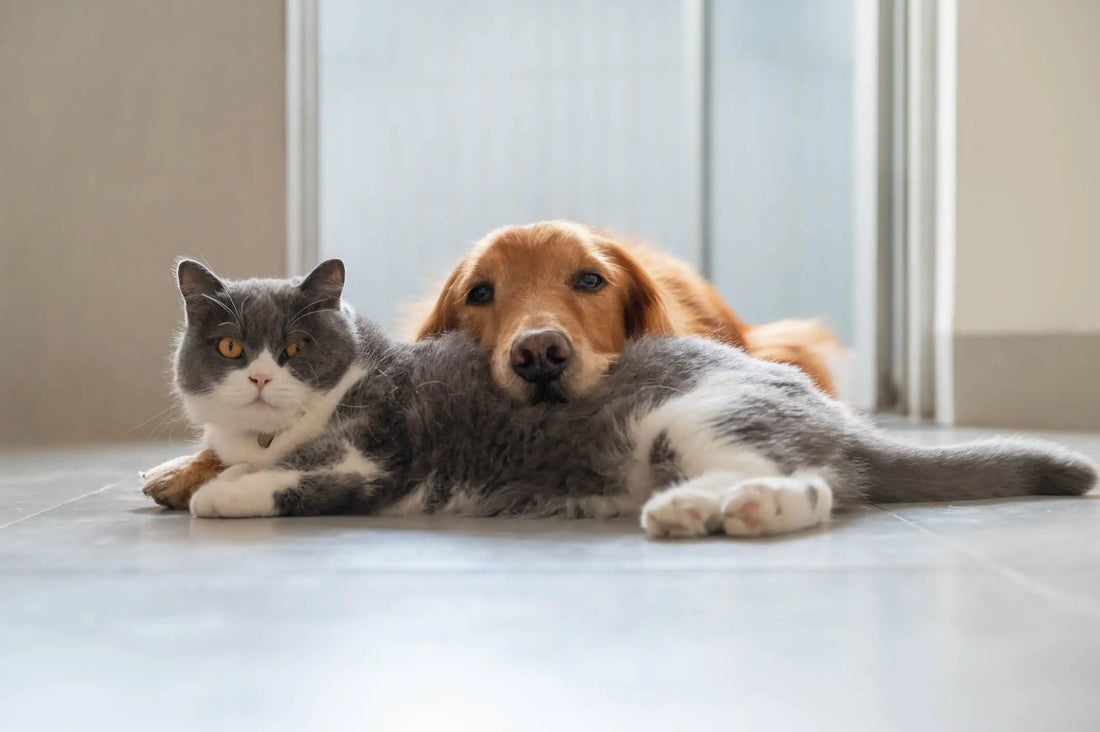
Crafting the Perfect Homemade Dog and Cat Food
Share
If you’re considering preparing homemade dog and cat food for your furry friend, you’re on a wonderful path to ensuring they get the best nutrition possible. But before you dive in, it’s essential to know a few key things to make the process smooth and beneficial for your pet.
Tools You’ll Need
First, invest in a good dietary gram scale. This will help you get familiar with the exact volumes of each ingredient. You can find these scales at most grocery stores or big-box retailers. Additionally, a quality blender or food processor is essential to mix all the ingredients thoroughly. This prevents your dog or cat from picking out individual items and ensures they get a balanced meal.
You’ll also need a pill crusher for vitamins and mineral tablets, and a pill splitter can come in handy, too. Lastly, a calculator will be helpful to figure out the correct portions for your dog or cat’s diet.

Homemade Pet Diet Preparation
Making homemade diets requires some time and effort, but it’s worth it! Start by measuring each ingredient carefully with your kitchen scale. Cooking is crucial for safety and digestibility – meat should be cooked for at least 10 minutes at 180°F to kill any harmful bacteria, and carbohydrate sources like potatoes and rice should be cooked well. Don’t forget to wash and cook vegetables before cooking, too.
After cooking, blend everything together. This step is vital to prevent your pet from eating only their favorite parts of the meal.
Adding Pet Supplements
Supplements are a non-negotiable part of homemade dog and cat diets. To meet every nutritional requirement completely you would need a recipe with over 20 ingredients, and even then, it can be very hard to find the right vitamin and mineral ratios. Supplements help cover the gaps in your diet as well as build some cushion into the diet to account for human error when measuring and cooking.
Crush vitamin and mineral tablets into a fine powder and add them after the food is cooked, combined and cooled. Vitamins do degrade slightly when heated so try to limit exposure to heat once the vitamins are added. This helps in maintaining the nutritional balance of the diet. Always check that the supplements match the nutritional needs of your pet and consult with a nutritionist to get a balanced overview of how these supplements are used.
Homemade Dog and Cat Food Storage Tips
Homemade diets don’t contain preservatives, so they can spoil quickly. Store any unused portions in an airtight container in the refrigerator, but only for a few days. If you’re making a large batch, freeze it before adding the vitamins and minerals. Always check for any changes in color, smell, or texture before feeding stored food to your pet.
Feeding Practices
Before feeding, bring the diet to room temperature. If you use a microwave, be careful of hot spots (a small amount of heat to warm the meal should not affect the vitamin levels substantially in a well-balanced diet). Any uneaten food should be discarded after a few hours to prevent spoilage. Clean your pet’s bowls thoroughly after each meal.
Monitoring and Veterinary Support
Regular monitoring is key. Keep an eye on your pet’s weight, activity level, and overall condition. It can be difficult to calculate the exact calorie need for your dog or cat as there are many immeasurable factors that go into that calculation. The best way to monitor your pet’s caloric need is to pay attention to what their body is telling us. Their hair, skin, and stool quality can provide good indicators of how well the diet is working. Their body condition score can be a great tool and sometimes better than overall weight as weight can vary between breed, age, and activity levels.
Don’t forget to involve your veterinarian in this journey. Regular check-ups (2-3 times a year) are important when feeding a homemade diet to your pet. Always inform your vet about the diet to ensure your pet’s health is on track.
Transitioning and Additional Tips
When introducing a new homemade diet, do it gradually to avoid upsetting your pet’s stomach. Follow a transition schedule: start with 75% old food and 25% new food, and gradually increase the new food over ten days.
If your pet has a history of food rejection or digestive issues, introduce new foods slowly and monitor for any adverse reactions like vomiting or diarrhea.
In Conclusion
Providing a homemade diet for your dog and/or cat is a great way to ensure they get a balanced and nutritious meal. By following these guidelines and working closely with your veterinarian, you can support your pet’s health and happiness. Remember, attention to detail in preparation, storage, and feeding practices is essential to making this endeavor a success.
For more information on a personalized homemade dog and cat food diet, dietary recommendations, and proper pet supplementation for your dog and/or cat, please Contact North Star Animal Nutrition.
